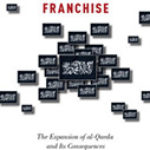Speaking Truth to Power: Confidential Informants and Police Investigations

Authors: Dean A. Dabney and Richard Tewksbury
Publisher: Oakland, CA: University of California Press, 2016. 232p.
Reviewer: Jon M. Shane | May 2017
When most people think of confidential informants (CIs), a shadowy image likely comes to mind; someone who has been coopted by an equally mysterious government figure who is, together with the CI, trying to uproot some criminal enterprise. As with most aspects of policing, the fictional world is more alluring and exciting than the real world. So too is the world of CIs. To get the real-feel between CIs and the police, it takes a treatment like that which Dabney and Tewksbury have compiled. This book is an in-depth ethnography of the “lived experiences” of police officers who use CIs in two U.S. cities. The authors spent considerable time interviewing and being embedded with investigators who, as part of their responsibilities, cultivate and use CIs during criminal investigations. The authors’ methodology sets their work apart from previous literature by describing and interpreting those “lived experiences” as the officers attach a sense of self-worth and value to their work, while acknowledging the dangers from such a treacherous lot. What they have prepared is an excellent work that earns its rightful place alongside other scholarly CI literature such as that by Peter K. Manning (The Narcs’ Game: Organizational and Informational Limits on Drug Law Enforcement, Waveland Press, 2004) and Martin Innes (‘Professionalizing’ the role of the police informant: The British experience, Policing and Society, 2000). The book has eight chapters that flow chronologically from identifying the various types of CIs that work with law enforcement to the benefits and pitfalls of working with Cis, and concludes with a summary of the theoretical and policy implications of working with CIs.
The book contributes nicely to the ethnographic literature on policing by providing a deep interpretive account of what the authors call “the game.” The “game” is the complex interaction between CIs (who quite frequently lead troublesome inner-city lives on the “streets”) and police officers, whose worldview is shaped by a subcultural ethos of solidarity and secrecy derived from real and symbolic assailants as well as from the organization in which they are embedded. Life inside the “game” is a competitive enterprise of ferreting out crime and criminality through two processes: working existing investigations (reactive) and generating new cases (proactive). As police officers stake their cases, and careers, on CIs, there is a constant tension and leeriness of trust and legitimacy between the officers and the CIs; to put it mildly, their relationship is, at best, tenuous. The work by the police in closing cases is situated inside an “information exchange,” where the motives of the CIs and the officers are categorized into a matrix that shapes the circumstances under which information is collected. The matrix guides the understanding of the types of informants police are likely to encounter (e.g., cooperating sources, unwitting sources and civic-minded informers) as police officers use them as a piece of “equipment” to develop investigations. Each type of informant poses a challenge to police management, so knowing the CI’s motivation helps the officers with recruitment and maintaining a stable relationship. Examining a CIs motivation from the outset and understanding how that motivation can intersect in difficult ways with institutional pressures to solve crimes, provides officers with a foundation for how intentional and unintentional wrongdoing can arise, and the consequences of poor judgement.
Although the police officers in the study describe how useful CIs can be to their investigations, they also note that the bureaucracy in which they are situated imposes formal policy prescriptions for working with CIs that impinge on their cases. Through established agency policy, the organization demands that the officers account for the CI through a formal registration process. However, many CIs eschew the prospect of having their personal pedigree formally documented for fear of intentional or unintentional leaks by officers that could expose them. Since the pressures of criminal investigations are ever-present, the officers are catapulted into a dilemma: formally register the CI and abide by the policy, which provides protections for the officer and the CI and enables the officer to document the information obtained from the CI, but that may chill the relationship between the officer and the CI due to its formality. Or, forego the registration and assume the risks of using the CI informally, where the information obtained cannot be formally documented, but still has investigative value. A significant question that arises in this informal setting is: how do officers explain where they obtained the information when they cannot attribute it to the CI? The officers readily acknowledge this dilemma and some are willing to informally use CIs under certain circumstances, but they are also well aware of the pitfalls of doing so. When used informally, CIs cannot be financially compensated, which partly disincentivizes them, but perhaps more importantly, exposes the officer to liability (such as when the officer acts outside of the scope of his or her employment and agency policy). This is just one of the many informalities of police work; although officers understand that CIs may bite them at any time with accusations of impropriety (e.g., paying the CI with drugs; coercing the CI into sex; stealing from the CI), they are willing to accept this risk in certain situations in the interest of controlling crime, which, albeit unstated in the text, hints at “noble cause corruption”—an ethical position that suggests sometimes police officers use unethical or illegal means to achieve desirable ends, a goal that appears to benefit the greater good.[1]
When Dabney and Tewksbury describe working with informants (Chapter 4), they also present a very interesting yet undeveloped subtlety in their account: the police officers describe CIs as an asset they control, and not as an asset controlled by the agency. This “officer-asset” model is an outmoded process that has generally given way to the “agency-asset” model, where the agency retains control over the CI, not the individual officer, a policy position endorsed by the International Association of Chiefs of Police. The principal aim of having the agency manage the CI instead of the individual officer is to exert control over such a tenuous asset, which is intended to further professionalize how CIs are handled. Part and parcel of professional CI management is policy and training. The authors explain that the police officers consistently mention little or no rote method for cultivating informants, and there is no discussion of training for the officers or the CIs. In the absence of established policy to guide these aspects of CI management, it becomes easier for officers to rationalize misconduct in an effort to neutralize the effects associated with misusing CIs as the officers pursue their crime control goals, particularly when there are incentives, opportunities and organizational pressures to achieve those goals. Setting rules through policy reduces the uncertainty about whether certain actions are permissible by denying the officers (and the CI) any benefits derived from misconduct, and spares the officers and the community from the harm wrought by misconduct.
Despite the perceived cumbersome nature of agency policy that governs CIs, there are benefits for the officers and the community. The obvious benefit for the officer is professional development and career advancement through making and closing criminal investigations. Police agencies exist to uncover and investigate offenses against the state. The officers are expected to use all the legal means available to them in this endeavor, and employing CIs to that end awaits them. Given their close contacts with others involved in crime, CIs have a unique—virtually exclusive—ability to facilitate investigations that police officers alone could not generate—such as infiltrating hard to penetrate groups (e.g., narcotics trafficking networks, gangs, organized crime syndicates, tax evasion, money laundering and fraud schemes, unlawful practices involving government and labor union employees) and dangerous conspiracies such as weapons trafficking organizations, terrorism and human trafficking networks.
In addition to the personal benefits for the officers, there are indirect benefits to the community. The authors explain how the benefits diffuse across the entire community, which indirectly affects others who were not involved with the operation. When police officers use CIs, they inevitably learn more about the community they are policing, which can inform other crime control strategies, such as problem-oriented policing and situational crime prevention that can have a wider positive impact on crime and disorder conditions.
For all their benefits, opting to use CIs does have pitfalls. The misdeeds of Jonathan Wild, Daniel Defoe and Jack Sheppard in 1720s London began to shine the spotlight on the relationship between the police and criminals, specifically how they went about their business, and the associations they formed. Although there are several motivating factors for becoming a CI (e.g., financial gain; fear of punishment; civic mindedness; self-aggrandizement; leniency; excitement; moral outrage; guilt), some are more sinister than others (e.g., jealousy; revenge/spite/reprisal; manipulating the police; counter surveillance of the police; eliminating competitors). Intrinsic to these devious motivations is a dangerous social cost to others: lying, concealing the truth and general untrustworthiness. Confidential informants have lied and fabricated circumstances during their work, thus throwing prosecutors, police officers and the criminal cases they represent into question; yet, above all, they contribute to wrongful convictions, a failure too great to bear in any criminal justice system.
What Dabney and Tewskbury make clear is that CIs will continue to play an active role in police operations; they are a “necessary evil” to dismantling secretive criminal enterprises. This means the police agency has an obligation to ensure the CI and the officers working with him or her are safe (insofar as possible), and the CI does not compromise the investigation or the ensuing prosecution. This requires drafting written policies and procedures that are followed by copious training exercises for the CIs and the officers; only when the procedures are reduced to writing does the police agency have a plan — before that there is only an idea, and an abstract idea is not sufficient to control the information exchange.
Overall, the book is well-written and extends the theoretical literature on CIs. Although the research is limited to just two police agencies in the U.S., given my own research in this area and my extensive reading of the CI literature, I am comfortable saying the results are generalizable. The book is suitable as a companion text to graduate sociology courses and “special topics” courses in policing. It is also suitable for practitioners who are responsible for policy development, insofar as the themes that arise provide relevant information for training programs, evidence-based practices and a strong rationale for public policy in this arena.
Jon M. Shane is Assistant Professor at the John Jay College of Criminal Justice
[1] Caldero, M. A., & Crank, J. P. (2010). Police ethics: The corruption of noble cause. Routledge; Miller, S. (1999). Noble cause corruption in policing. African Security Studies, 8(3), 12-22; Cooper, P., & Murphy, J. (1997). Ethical approaches for police officers when working with informants in the development of criminal intelligence in the United Kingdom. Journal of social policy, 26(1), 1-20; Dunnighan, C., & Norris, C. (1999). The detective, the snout, and the Audit Commission: The real costs in using informants. The Howard Journal of Criminal Justice, 38(1), 67-86.


